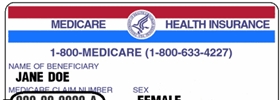There are several options for comparing and enrolling in a Medigap plan. First, you can contact each company that offers plans in your area to compare plans and rates. Although this is certainly an option, it is one that would be incredibly time-consuming. The alternative is using an independent broker – an independent broker allows you the opportunity to compare multiple options in a centralized place, get unbiased feedback about the various plan options and make an informed choice.
Often, people end up choosing a plan that is higher in price than other options, without understanding the standardization of plans which mandates that all companies offer the same coverage and work the same way. This can lead to paying more for the exact same thing. An independent broker’s job is to help you compare the options to pick a plan that is competitively-priced for the coverage level you want.
If you have questions about this or want to look at the options in your area, please contact us online or call us at 877.506.3378.







